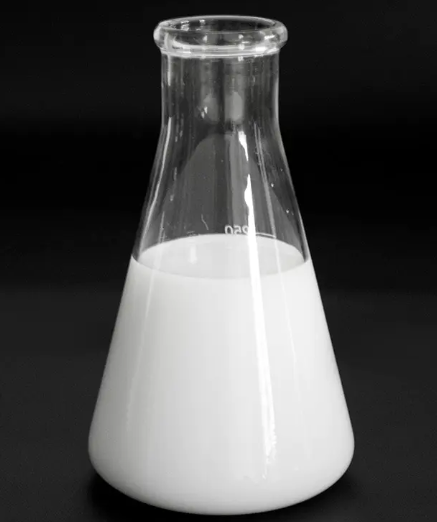Learn about recent related news.

Why can colloidal silica/Silica Sol with Large Particle Size be applied to ceramics and refractory materials?
Colloidal Silica is a nano-scale material widely used in industrial fields such as ceramics and refractory materials. In particular, colloidal silica with large particle size has become an ideal material for these high-temperature applications due to its unique physical and chemical properties. The following will explain why large-particle colloidal silica can be widely used in ceramics and refractory materials from the aspects of colloidal silica structure, stability, bonding force, heat resistance, etc.
1. Effect of particle size on material properties
Large-particle colloidal silica generally refers to silica particles with a particle diameter between 50 nanometers and 100 nanometers. Compared with small-particle silica sol, large-particle particles have higher mechanical strength and more stable performance. These characteristics make large-particle colloidal silica show good performance in ceramics and refractory materials. For example, in the manufacturing process of ceramics, large-particle particles can be more evenly distributed in the matrix material to form a denser structure, thereby improving the strength and durability of the material.
2. High-temperature stability of colloidal silica
Ceramics and refractory materials must maintain a stable structure under high temperature conditions. Colloidal silica has become an important component of these materials due to its good performance at high temperatures. Colloidal silica with large particle size has better high-temperature stability, is not easy to decompose or volatilize, and can continue to provide support at high temperatures. Its stability during high-temperature firing can effectively prevent the material from deforming or cracking at high temperatures and ensure the overall quality of the product.
For refractory materials, the thermal shock resistance of the material under high temperature environment is crucial. Colloidal silica with large particle size can enhance the thermal shock resistance of refractory materials and reduce the cracks caused by expansion or contraction of the material during repeated high-temperature thermal cycles, thereby extending the service life of the refractory materials.
3. The binding force of colloidal silica
In ceramics and refractory materials, another important function of colloidal silica is to be used as a binder. Colloidal silica with large particle size has strong adhesion properties and can tightly bind different granular materials together to form a dense structure. This strong bonding force is particularly important for ceramic materials because it ensures that the ceramic products maintain structural integrity during high-temperature sintering, reduces the porosity generated after sintering, and improves the density and strength of the finished product.
The addition of colloidal silica can also reduce the sintering temperature of ceramic materials, thereby reducing energy consumption and improving production efficiency. Due to its good fluidity, large-particle silica sol is easier to apply when applied, and can be evenly distributed in various parts of ceramics or refractory materials to ensure product consistency.
4. Reinforcement in refractory materials
Large-particle colloidal silica can not only act as a binder, but also as a reinforcing agent to improve the performance of refractory materials. Refractory materials need to maintain their structure and function under extremely high temperature conditions. Colloidal silica has high refractory performance and can maintain its physical and chemical properties stable under high temperature environments, thereby providing additional support for the material. In addition, silica particles can fill the tiny pores in the refractory material, reduce the penetration and diffusion of gases, and thus improve the material's antioxidant properties.
Refractory materials often need to withstand harsh environments such as high temperature and high pressure during use. Large-particle colloidal silica exhibits good corrosion resistance in this environment, can effectively resist the erosion of chemical reactions, and extend the service life of the material.
5. Improvement of material wear resistance
Ceramics and refractory materials are usually worn during use, especially in industrial environments, where materials are often subjected to physical stresses such as friction and impact. The high hardness of large-particle colloidal silica enables it to improve the wear resistance of the material, thereby reducing surface loss caused by friction. This is particularly important for long-term use of refractory materials, because the wear of refractory materials will affect their protective function and lead to more frequent replacement.
In the field of ceramics, colloidal silica can improve the wear resistance of products and improve the finish of ceramic surfaces. Large-particle silica particles can form a smoother surface during sintering, thereby improving the appearance quality of ceramic products while reducing their surface roughness.
6. Environmental protection and sustainability
Large-particle colloidal silica is not only superior to other binders and reinforcing agents in performance, but also has good environmental characteristics. Silica itself is a non-toxic and harmless material that does not release harmful substances during production and application. In addition, colloidal silica can reduce the sintering temperature of ceramics and refractory materials, thereby reducing energy consumption and carbon emissions, which is in line with the requirements of sustainable development.
Related Products
-
Ammoniacal Colloidal silica/silica sol is a low density, colloidal silica used as a filler in coatin...
-
Colloidal silica/Silica Sol with Large Particle Size
Colloidal silica/Silica sol is a kind of colloid which is formed by nm-grade particles SiO2, dispers... -
Low Sodium Type Colloidal Silica/Silica Sol
Colloidal silica/Silica sol is a kind of colloid which is formed by nm-grade particles SiO2, dispers... -
Potassium Type Series Colloidal Silica/Silica Sol
Colloidal silica/Silica sol is a kind of colloid which is formed by nm-grade particles SiO2, dispers... -
Sodium Colloidal Silica/Silica Sol
Sodium Colloidal Silica/Silica Sol Colloidal silica/Silica sol is a kind of colloid which is formed ... -
Acid Series Colloidal Silica/Silica Sol
Acidic silica sol is a colloidal solution formed by uniform diffusion of silica particles in water. ... -
Colloidal Silica/Silica Sol With Small Particle Size
Colloidal silica/Silica sol is a kind of colloid which is formed by nm-grade particles SiO2, dispers... -
Neutral Colloidal Silica/Silica Sol
Colloidal silica/Silica sol is a kind of colloid which is formed by nm-grade particles SiO2, dispers...


 中文简体
中文简体